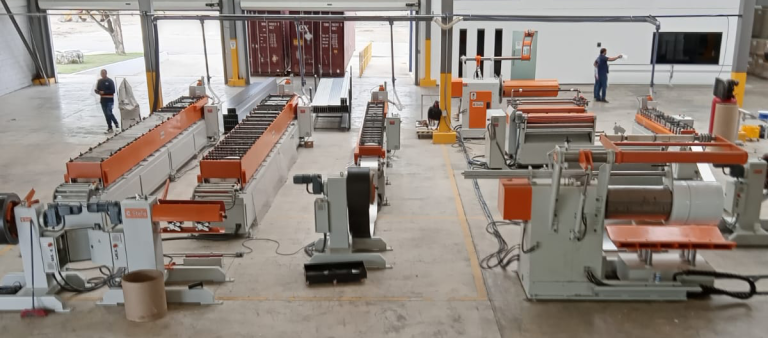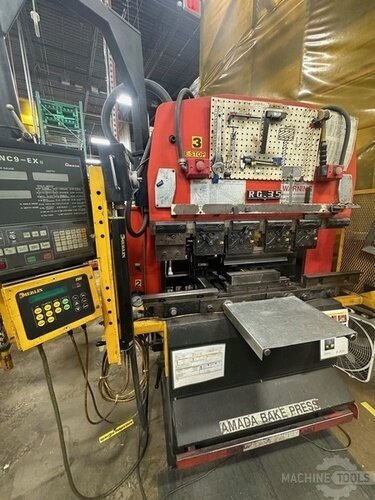I am Nicole Salato, Service and Parts Lead at Mac-Tech. Every day I help shops keep their press brakes productive with practical preventative maintenance plans and the right parts, delivered when they are needed. My team coordinates service, parts sourcing, and troubleshooting so you can bend accurately, protect your investment, and avoid surprise downtime. You can reach me at nicole@mac-tech.com.
Daily and weekly press brake checks to prevent downtime
- Power-up routine and safety: review the CNC alarm history, test e-stops, light curtains, foot pedal, and interlocks. Confirm axes home correctly and the machine hits reference without drift.
- Hydraulics: verify oil level and temperature, look for foaming or milkiness that suggests air or water contamination, listen for cavitation or pump whine, and inspect for leaks at hoses, fittings, and cylinder glands.
- Lubrication and motion: confirm automatic lubrication cycles, check lube reservoir level, and wipe guideways and tooling seats. Verify smooth travel of backgauge axes and check finger alignment.
- Tooling and alignment: clean clamping surfaces, confirm clamp force, and check punch and die seating. Make a quick test bend to confirm angle repeatability across the bed and that crowning compensation is correct.
- Air and electrical health: drain air-line water traps, confirm air pressure and dryness for pneumatic clamping, clean cabinet filters, and make sure fans run freely.
- Weekly deeper checks: inspect hydraulic filter indicators, check belt and coupling condition on pump and motors, verify backgauge ball screw and linear guide lubrication, tighten accessible fasteners on tool clamps and finger mounts, and back up CNC programs and parameters to external media.
Consistent daily and weekly habits catch small problems early. A five-minute check often prevents a five-hour stoppage.
Quarterly and annual maintenance to extend machine and tooling life
- Quarterly precision checks: verify ram parallelism and bed straightness with a test bend across multiple stations. Recalibrate crowning if needed. Square and calibrate backgauge axes, then confirm repeatability under load.
- Hydraulic condition: pull an oil sample for lab analysis. Replace return and pressure filters by indicator or hours, inspect suction strainers, and check relief valve and system pressure settings against spec. If your system uses an accumulator, verify nitrogen charge.
- Electrical reliability: vacuum the cabinet, inspect terminals and grounds, and consider a thermal scan to find hot connections. Replace control and drive batteries on schedule and keep current backups of parameters and license keys.
- Motion components: grease linear guides and ball screws per the manufacturer, inspect way covers, check cylinder rod wipers, and evaluate for seal seepage.
- Annual service: change hydraulic oil based on hours or analysis. Re-level the machine and perform a full geometry check. Complete a safety inspection that includes light curtain performance and foot pedal logic. Review tooling for wear, regrind or replace as needed, and update bend libraries for accurate springback compensation.
- Facility factors: confirm stable power quality, correct transformer taps, proper grounding, and clean, dry compressed air. Keep ambient temperature and humidity within recommended limits.
Measured, scheduled work preserves accuracy, reduces scrap, and extends component life.
Parts strategy: critical spares, OEM vs aftermarket, lead times and stocking plans
- Priority spares to cut downtime risk:
- Hydraulic return and pressure filters, seal kits, hose assemblies, and a known-good pressure transducer
- Safety and control items such as e-stop switches, light curtain emitters/receivers or spare cables, foot pedal, and enabling switches
- Common sensors including proximity switches and linear scale reader heads (protect electronics with ESD-safe storage)
- CNC and drive batteries, cabinet fan filters, fuses, contactors, and relays
- Lubrication pump cartridges, recommended hydraulic oil and way oil, belts, and backgauge finger hardware
- OEM vs aftermarket guidance:
- Use OEM or certified equivalents for safety circuits, hydraulic valves that control motion, scales, and control electronics to maintain compliance and performance.
- Quality aftermarket is often suitable for wear items such as filters, fans, hoses, and some mechanical hardware when specifications match. Always verify dimensions, pressure ratings, connector types, and firmware compatibility.
- Lead times and stocking:
- Typical same-day to 3-day availability for filters, sensors, switches, batteries, hoses, and fast-moving consumables.
- 1 to 3 weeks for many solenoid valves, pumps, contactors, HMI screens, and clamping parts.
- 2 to 6 weeks or more for CNC hardware, servo drives and motors, ball screws, gearboxes, cylinders, and custom backgauge assemblies.
- Build a min-max stocking plan for your critical machines and standardize spares across similar models when possible. Track serial numbers, software revisions, and part numbers in your maintenance log. Store fluids and seals correctly and rotate stock on a FIFO basis.
Planning ahead eliminates rush premiums and lets you schedule repairs around production.
ERMAKSAN POWER-BEND FALCON BENDING MACHING
Work with Nicole Salato, Service and Parts Lead at Mac-Tech (nicole@mac-tech.com) for preventative maintenance, parts sourcing, and coordinated service
I start with a quick machine profile and maintenance review, then build a practical PM schedule that fits your hours and material mix. We create a right-sized spare parts list, confirm compatibility by serial number, and set up backups for CNC programs and parameters. When issues arise, I triage over phone or video, ship parts with clear installation notes, and schedule a technician if needed.
You will get:
- Clear timelines, pricing, and shipping options before you approve
- Coordination with technicians, including checklists and post-service reports
- Help with oil analysis, calibration records, and safety test documentation
- A single point of contact to keep communication simple and fast
FAQ
How fast can you source common press brake parts?
- Most filters, sensors, switches, batteries, hoses, and cabinet consumables ship same day or next day. Valves, pumps, and clamping components are often 1 to 3 weeks. Electronics such as CNC modules and drives typically run 2 to 6 weeks. I will provide current lead times and expedite options.
How do I know my machine needs service soon?
- Watch for angle drift across the bed, rising hydraulic temperature, new pump or valve noise, oil leaks, inconsistent approach speed, repeat alarms, or backgauge inaccuracy. Any safety device fault requires immediate attention.
What should be in a preventative maintenance plan?
- Daily and weekly checks, quarterly calibration and oil analysis, annual oil change and safety inspection, regular backups, and a spare parts plan that matches your production risk. Tie tasks to run hours when possible.
Will aftermarket parts void my warranty or reduce safety?
- For safety circuits, motion control, and core hydraulics I recommend OEM or certified equivalents. For wear items we can evaluate aftermarket options that meet the same specifications. I confirm compatibility before you order.
What is Mac-Tech’s ordering and response process?
- Email me at nicole@mac-tech.com with the machine model, serial number, photos of the nameplate, error messages, and a short description. I will confirm the part numbers, send a quote with lead times, and arrange shipping. Orders placed before the carrier cutoff usually ship the same day if in stock. For urgent cases I coordinate after-hours options and technician scheduling.
- What hydraulic oil should I use and how clean should it be?
- Follow the manual viscosity recommendation, commonly ISO VG 32 or 46 with antiwear additives. Target cleanliness around ISO 16/14/11 or better. Do not mix oils. If changing type or brand, flush as required and replace filters.
Keeping your press brake reliable is a team effort. I am ready to help you set up a smart maintenance schedule, secure the right parts, and coordinate service that respects your production commitments. Reach out anytime at nicole@mac-tech.com and let’s keep your machine in top shape.
Get Weekly Mac-Tech News & Updates







